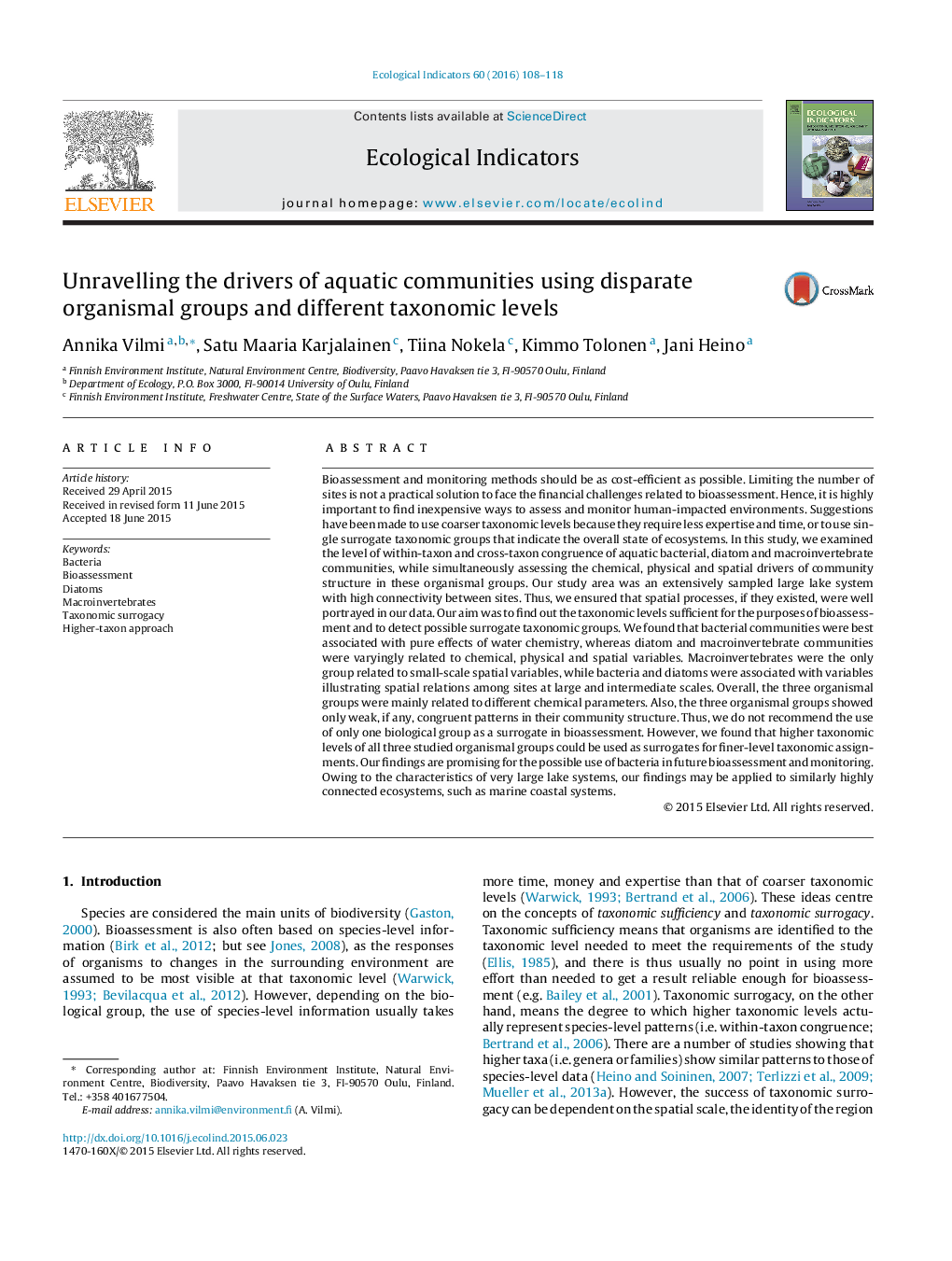| Article ID | Journal | Published Year | Pages | File Type |
|---|---|---|---|---|
| 6293997 | Ecological Indicators | 2016 | 11 Pages |
Abstract
Bioassessment and monitoring methods should be as cost-efficient as possible. Limiting the number of sites is not a practical solution to face the financial challenges related to bioassessment. Hence, it is highly important to find inexpensive ways to assess and monitor human-impacted environments. Suggestions have been made to use coarser taxonomic levels because they require less expertise and time, or to use single surrogate taxonomic groups that indicate the overall state of ecosystems. In this study, we examined the level of within-taxon and cross-taxon congruence of aquatic bacterial, diatom and macroinvertebrate communities, while simultaneously assessing the chemical, physical and spatial drivers of community structure in these organismal groups. Our study area was an extensively sampled large lake system with high connectivity between sites. Thus, we ensured that spatial processes, if they existed, were well portrayed in our data. Our aim was to find out the taxonomic levels sufficient for the purposes of bioassessment and to detect possible surrogate taxonomic groups. We found that bacterial communities were best associated with pure effects of water chemistry, whereas diatom and macroinvertebrate communities were varyingly related to chemical, physical and spatial variables. Macroinvertebrates were the only group related to small-scale spatial variables, while bacteria and diatoms were associated with variables illustrating spatial relations among sites at large and intermediate scales. Overall, the three organismal groups were mainly related to different chemical parameters. Also, the three organismal groups showed only weak, if any, congruent patterns in their community structure. Thus, we do not recommend the use of only one biological group as a surrogate in bioassessment. However, we found that higher taxonomic levels of all three studied organismal groups could be used as surrogates for finer-level taxonomic assignments. Our findings are promising for the possible use of bacteria in future bioassessment and monitoring. Owing to the characteristics of very large lake systems, our findings may be applied to similarly highly connected ecosystems, such as marine coastal systems.
Related Topics
Life Sciences
Agricultural and Biological Sciences
Ecology, Evolution, Behavior and Systematics
Authors
Annika Vilmi, Satu Maaria Karjalainen, Tiina Nokela, Kimmo Tolonen, Jani Heino,
